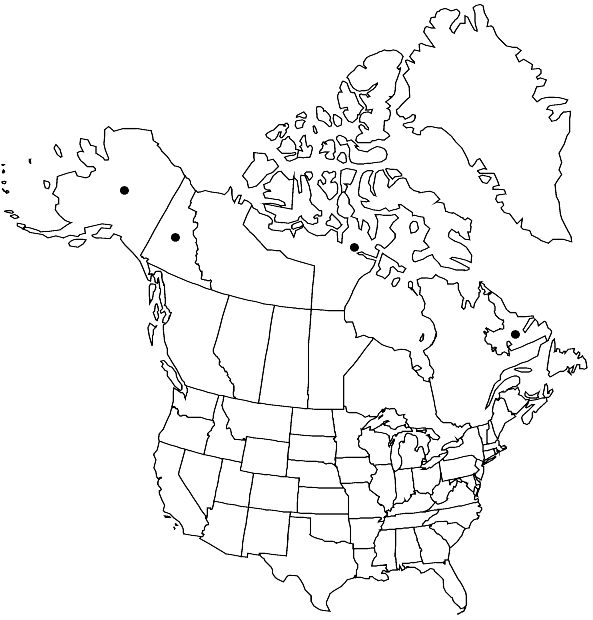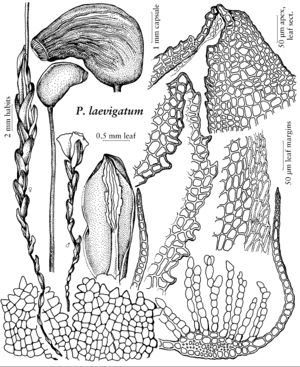Psilopilum laevigatum
Öfvers. Kongl. Vetensk.-Akad. Förh. 18: 190. 1861,.
Stems 7–10(–18) mm, slender, rather wiry. Leaves 1.5–1.8(–2.5) mm, ovate to oblong-obovate, erect-incurved when dry, only weakly spreading when moist, rounded concave in lamellate portion, becoming abruptly cucullate approaching the obtuse apex; margins irregularly dentate with projecting ends of obliquely oriented, rhomboidal marginal cells, usually hyaline-margined; costa ending in or just below apex, smooth on the back above, rarely with a few low, adaxial lamellae; lamellae 8–15, 6–12 cells high, margins deeply incised, coarsely and irregularly dentate; cells of leaf base short-rectangular, narrower at margins; median cells of lamina 12–24(–30) µm wide, thin- to firm-walled; perichaetial leaves 3.8–4.5 mm, erect, twice as long as stem leaves or longer. Seta brown, 7–15 mm. Capsule 2.6–4 mm, greenish to dark brown to blackish brown, variable in shape, asymmetrically ovoid and gibbous; peristome teeth 200–320 µm.
Habitat: Habitat similar to that of Psilopilum cavifolium, somewhat rare and local in arctic North America
Distribution

Nfld. and Labr. (Labr.), Nunavut, Yukon, Alaska, arctic and subarctic Eurasia (southward to 61ºN, including Archangelsk Province, e Siberia, Altai), Atlantic Islands (Iceland).
Discussion
Habitat similar to that of Psilopilum cavifolium, somewhat rare and local in arctic North America; Nfld. and Labr. (Labr.), Nunavut, Yukon; Alaska; arctic and subarctic Eurasia (southward to 61ºN, including Archangelsk Province, e Siberia, Altai); Atlantic Islands (Iceland).
In Nunavut, Psilopilum laevigatum is known from Baffin Island.
Selected References
None.
